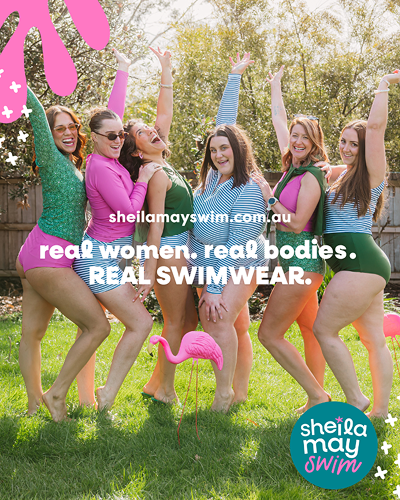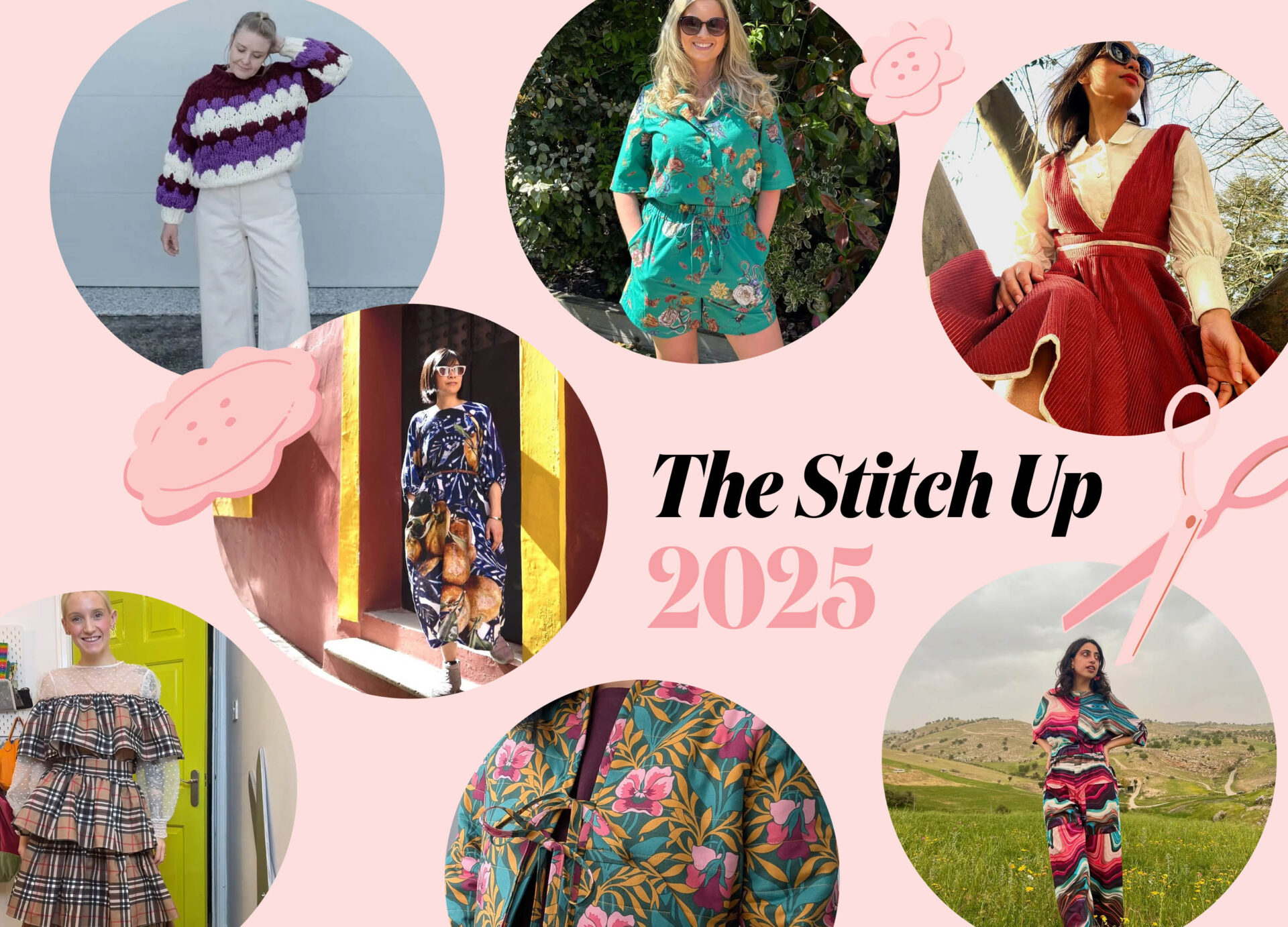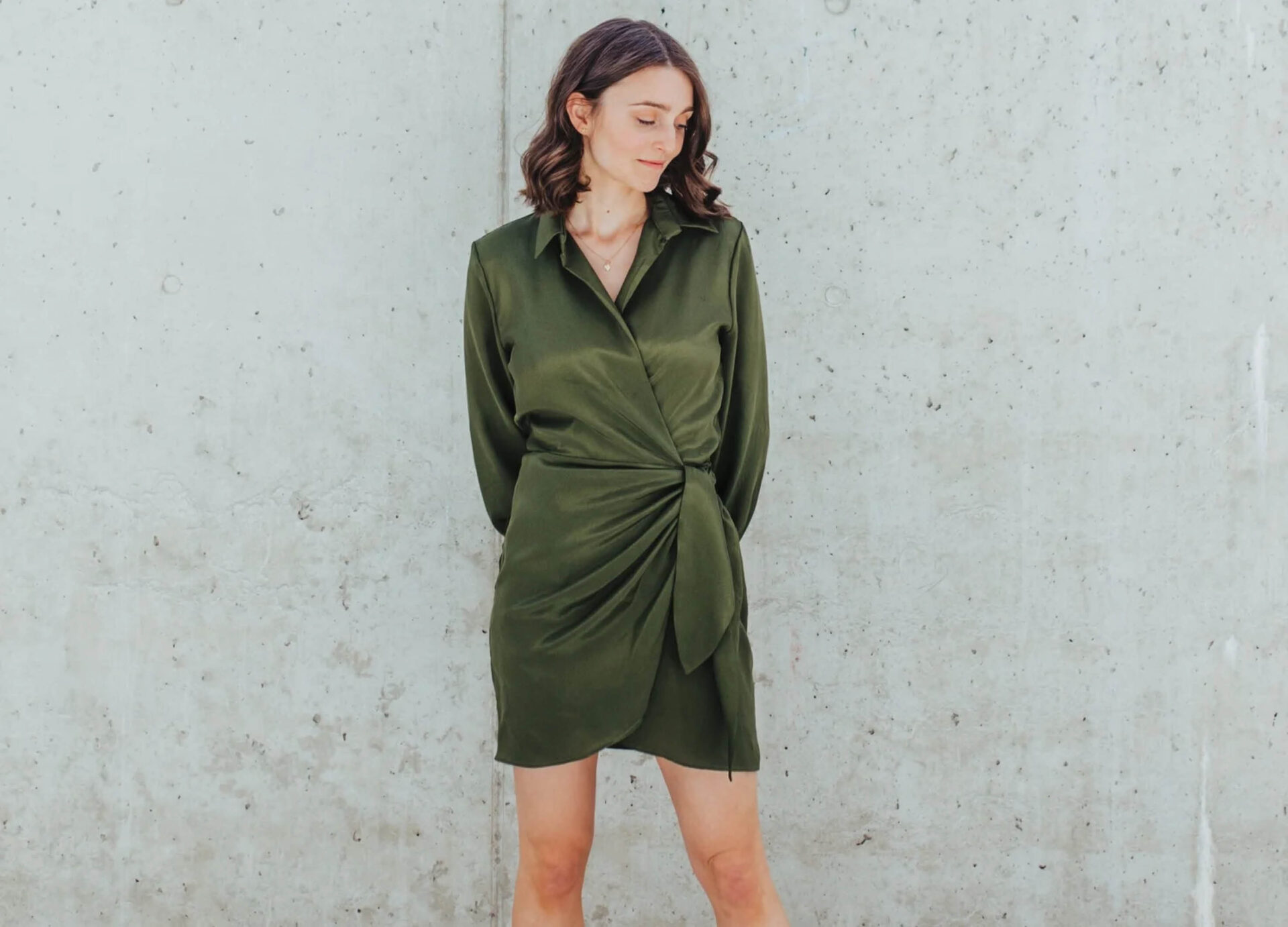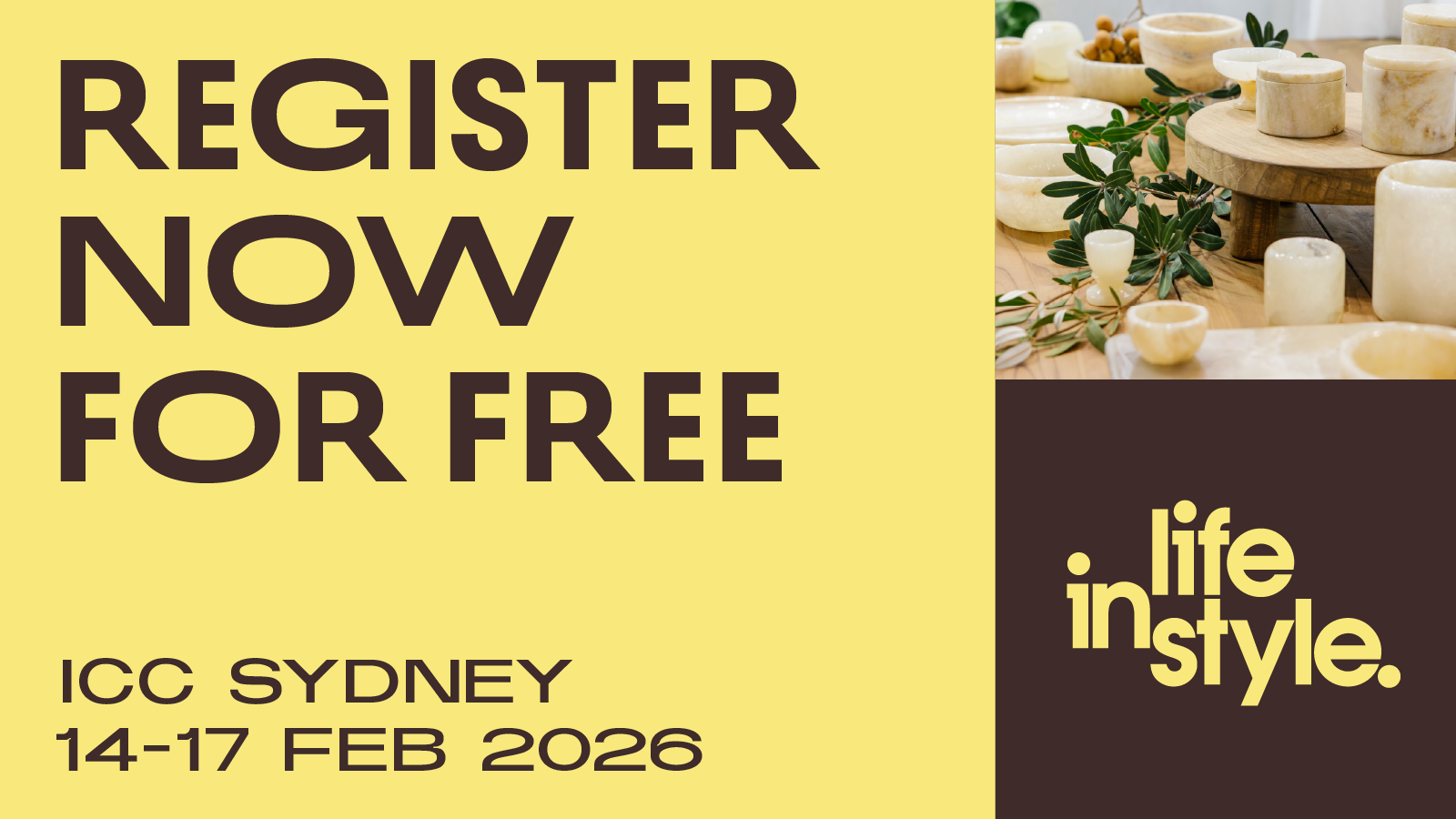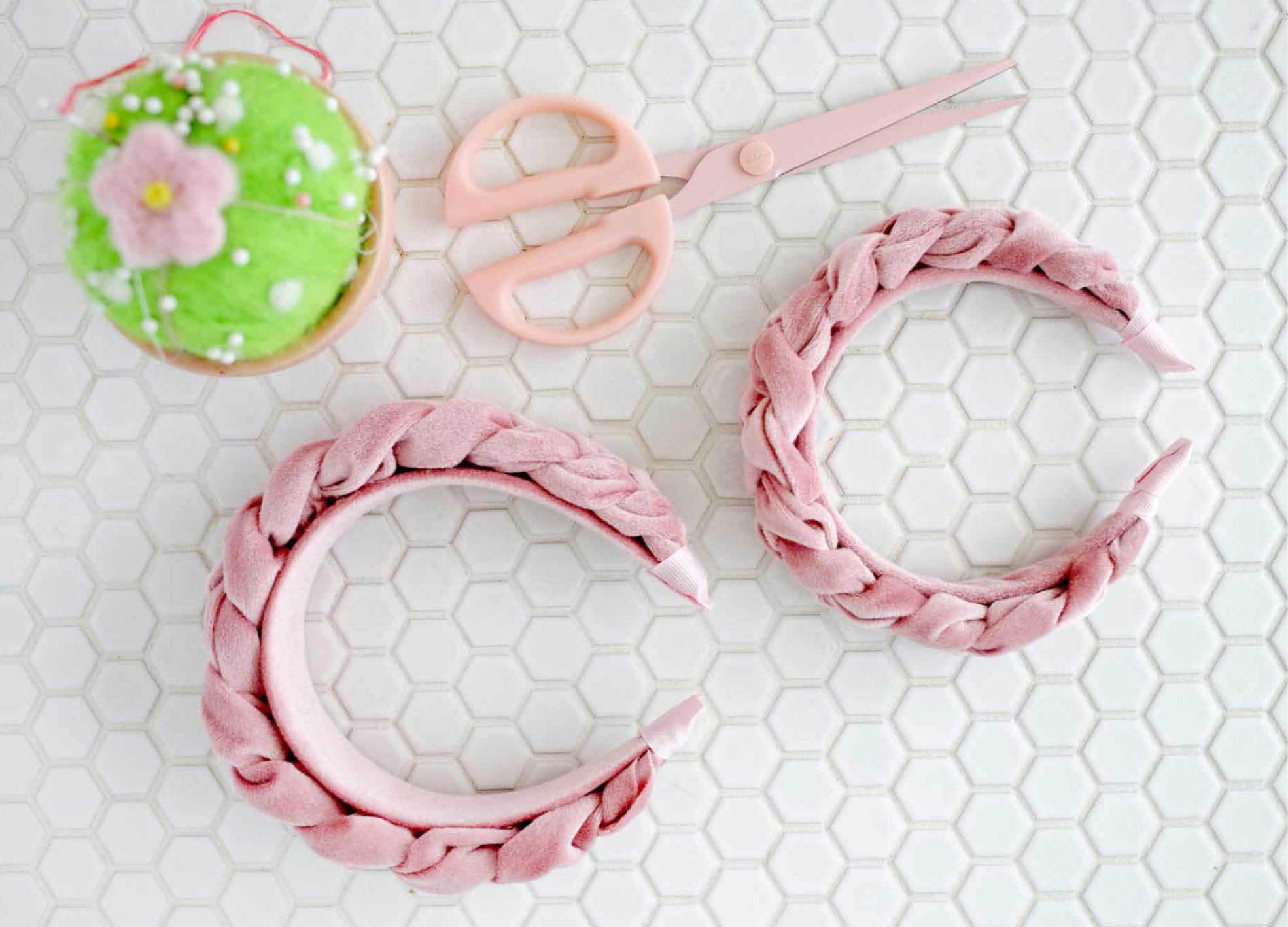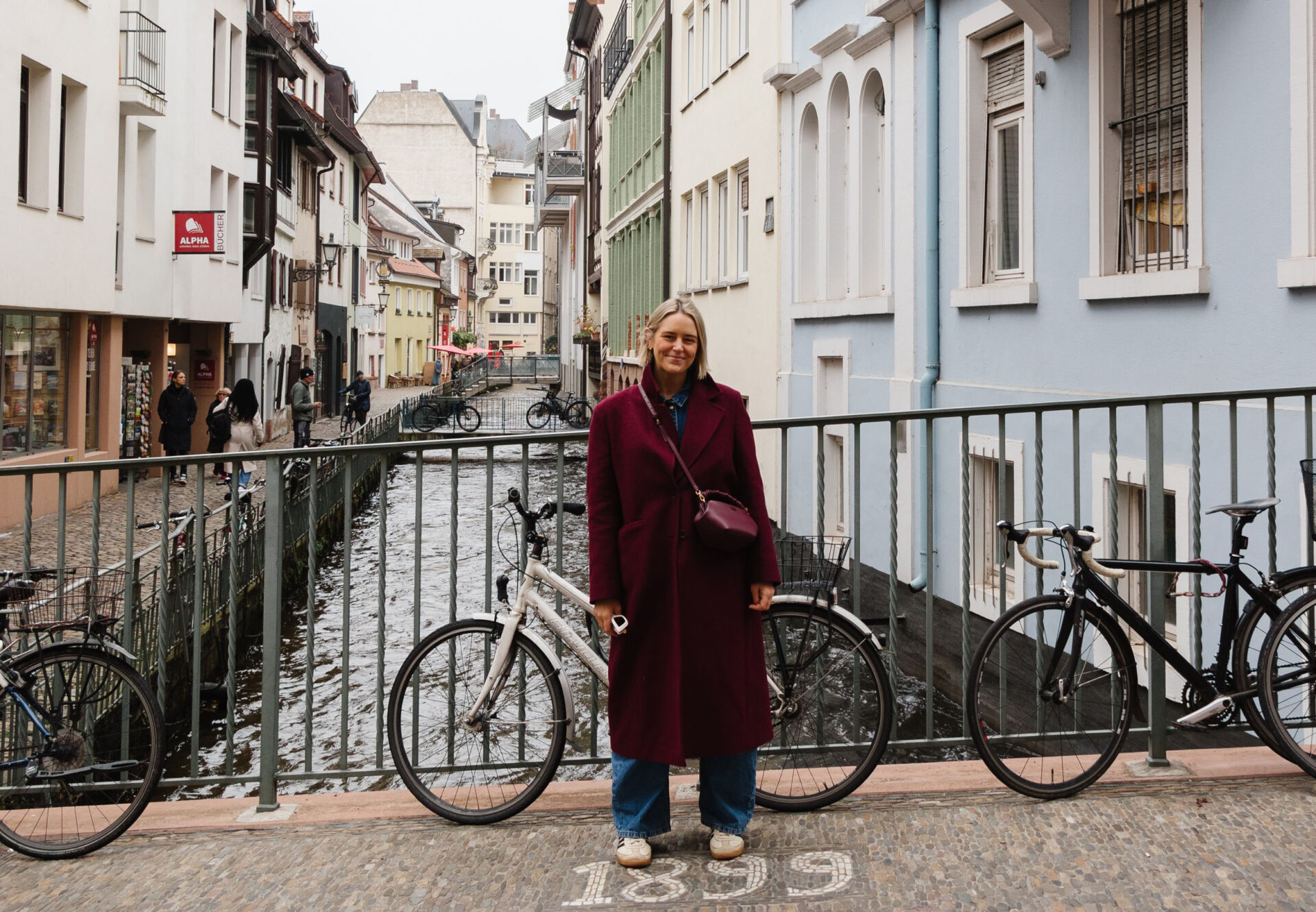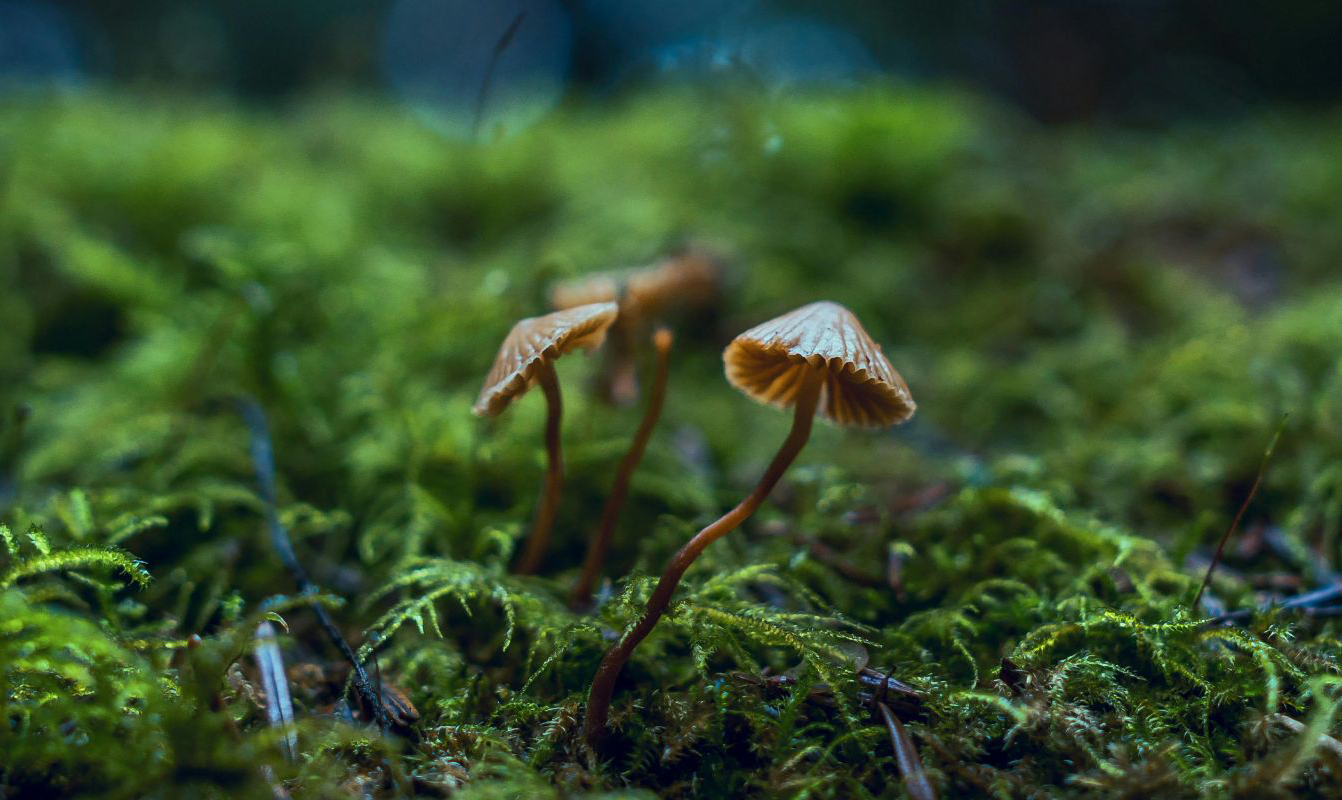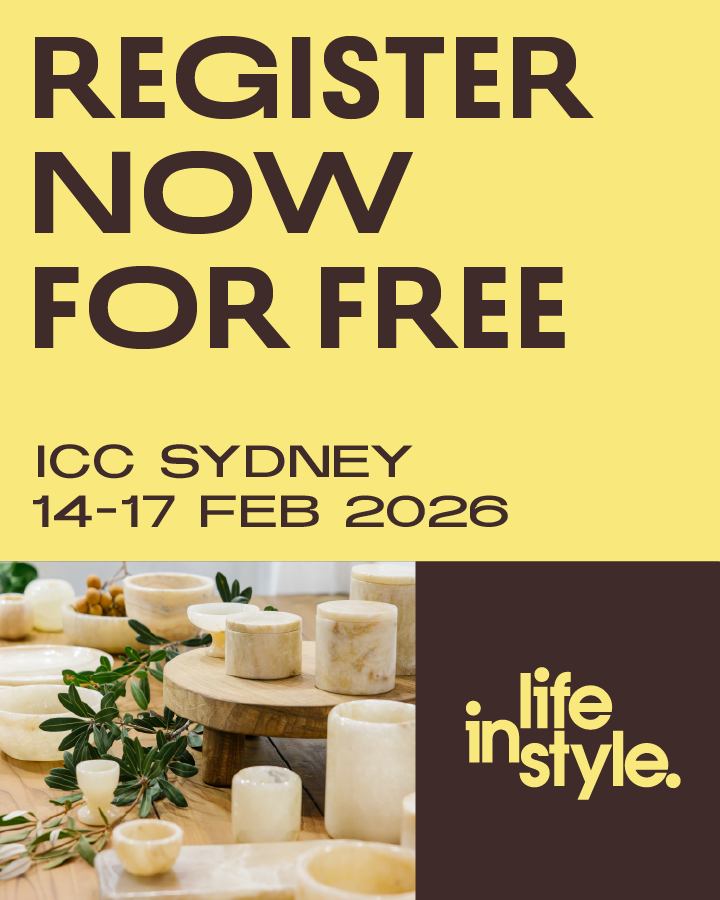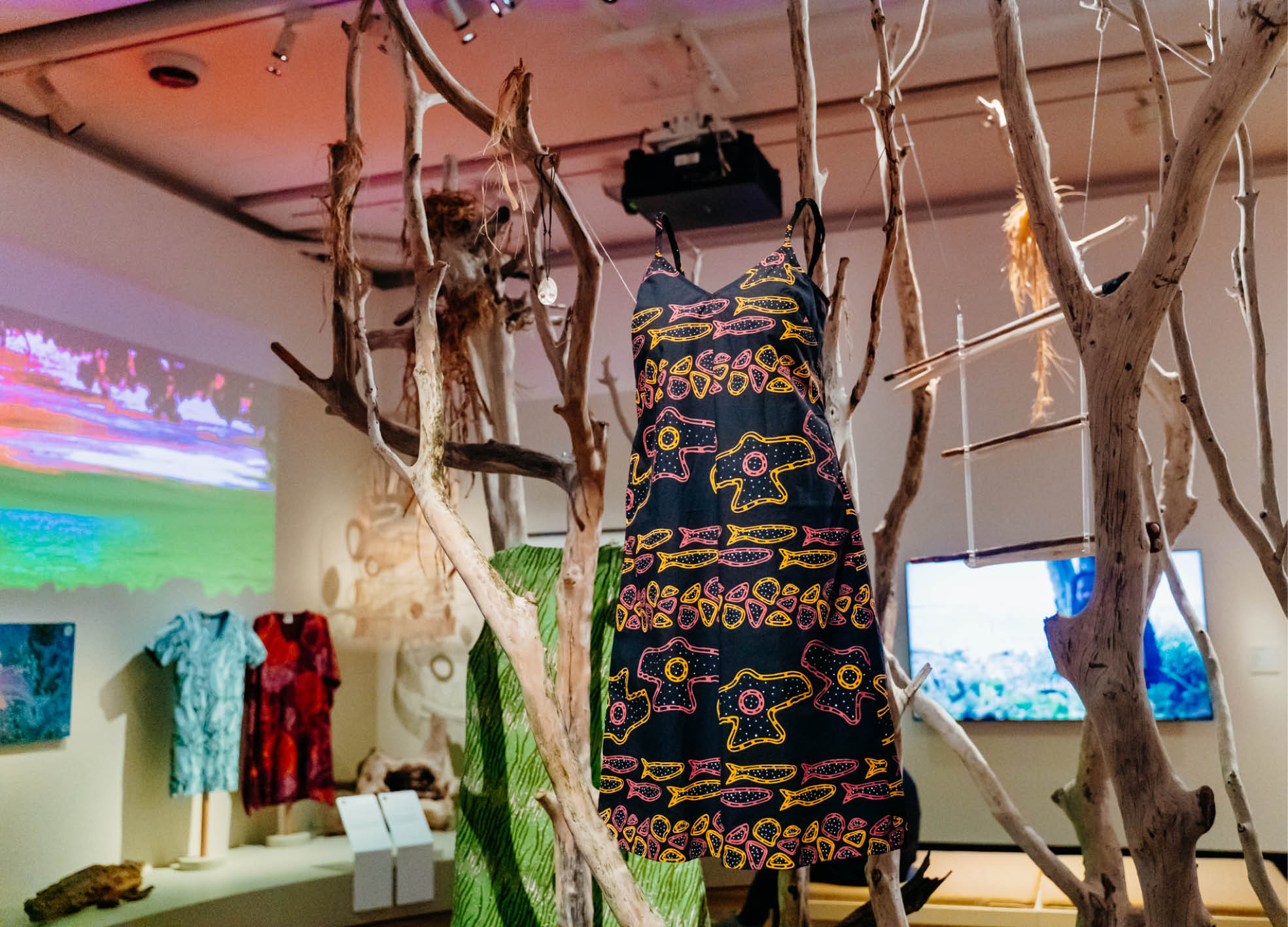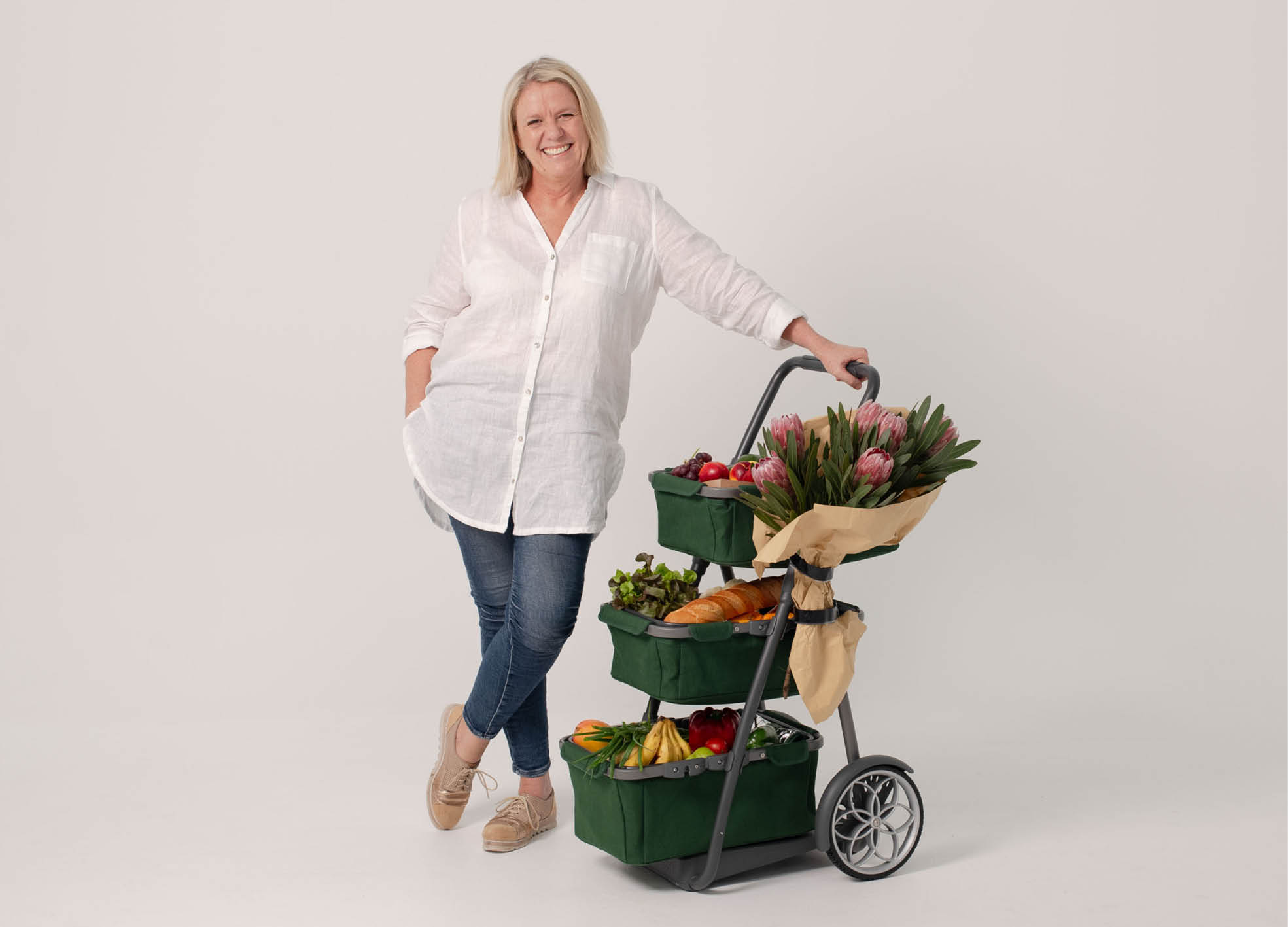How Surface Pattern Designer Erin Kendal Turned a Side Hustle Into a Thriving Creative Business
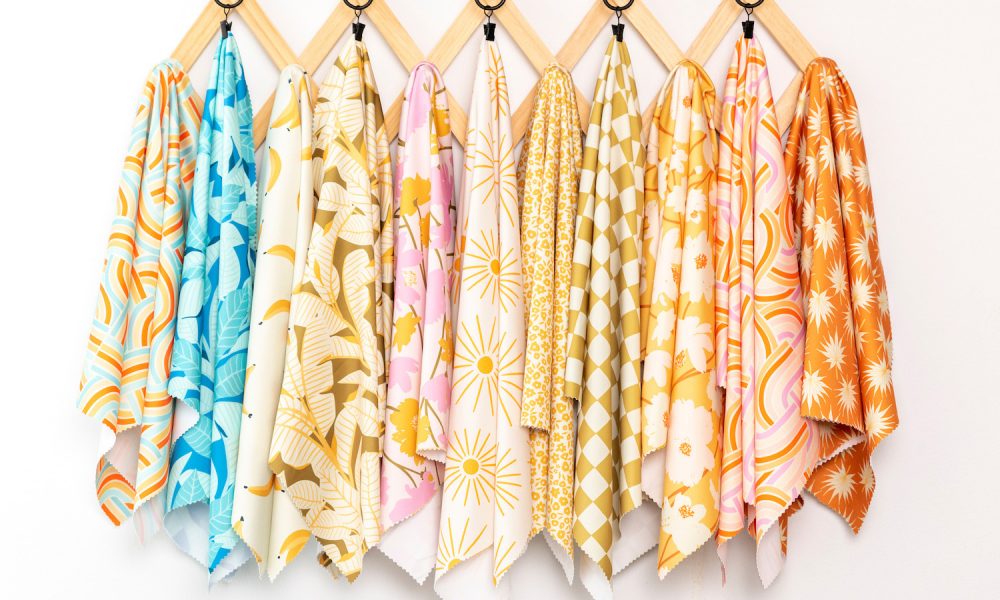
- Words by Peppermint
photos DANIEL LANCASTER
Leaving her corporate life behind, Australian creative Erin Kendal has taken the textile design world by storm, all while sharing her story to inspire others.
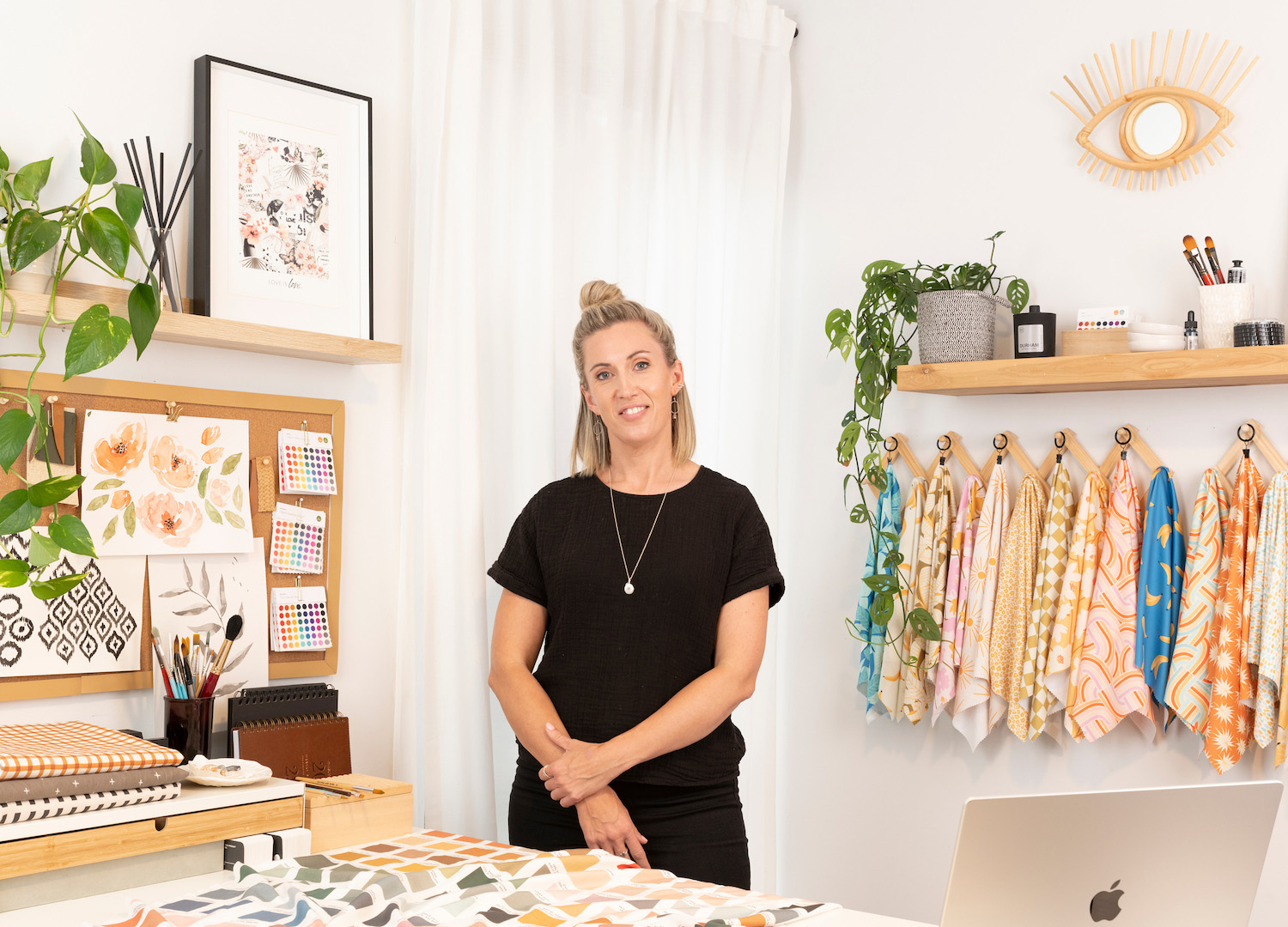
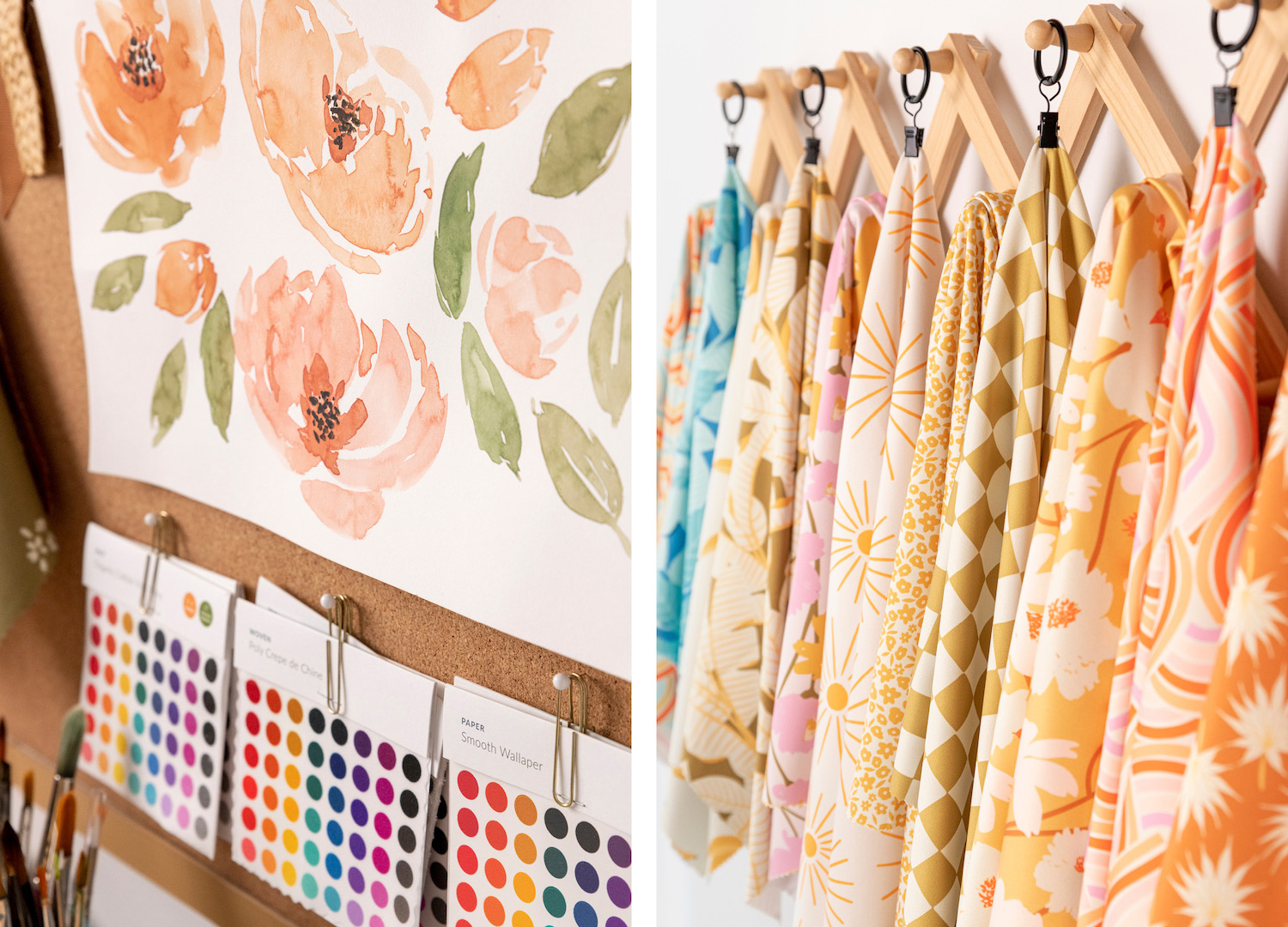
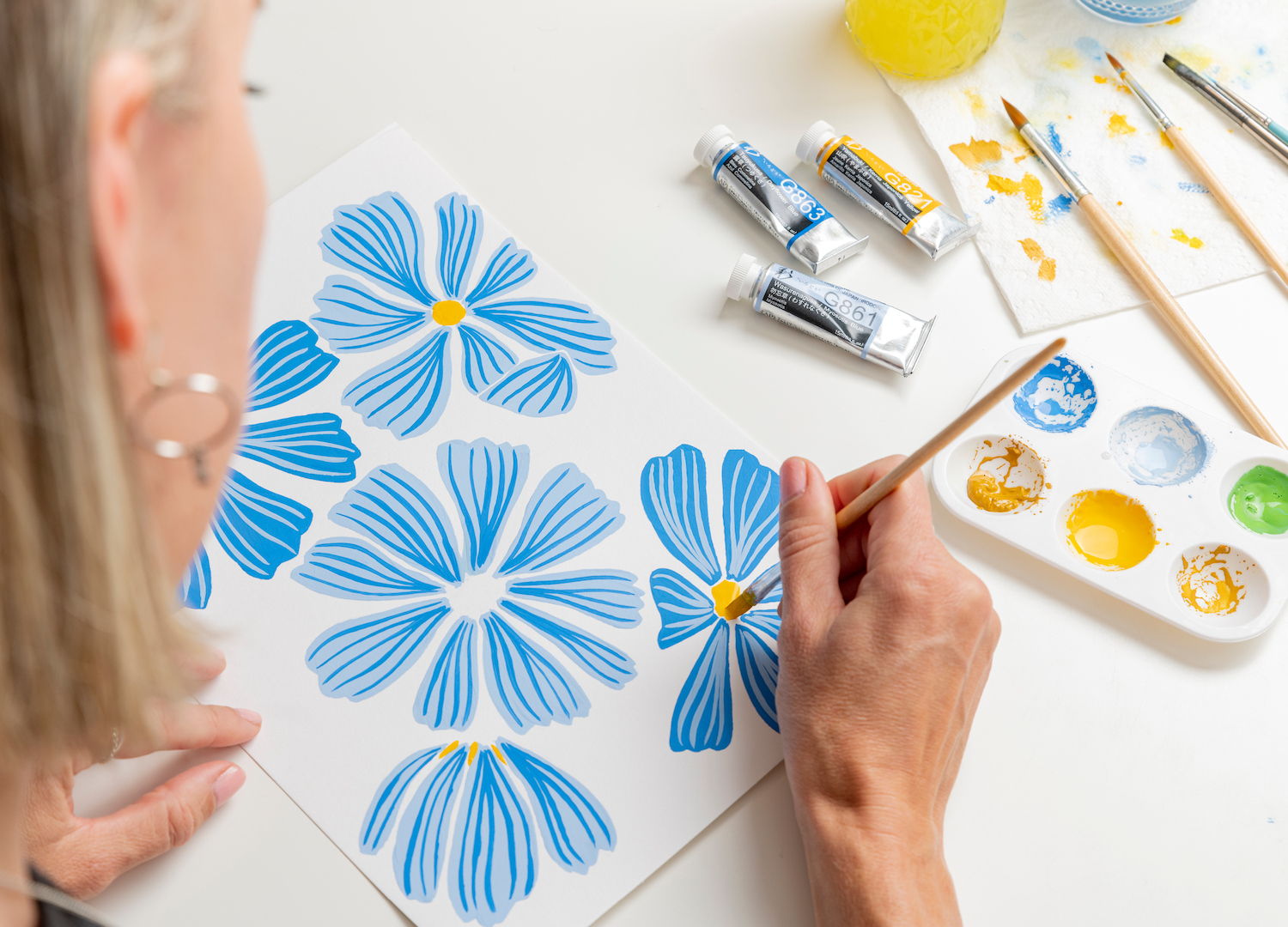
Tell us a bit about your creative background…
I’ve grown up surrounded by creativity – my mum was a traditional sign writer and is a talented sewist; my sister is a self-taught artist working in several mediums; even my dad used to hand-craft leather goods back in the day. Needless to say, I’ve loved painting, drawing and crafting since forever.
How did you get started?
When I finished school, I had no idea what surface pattern design was – in fact, I still have to explain it to others! I worked in the corporate world for 15 years and during that time had what many would call a ‘side hustle’ with the hope to quit my day job. I tried many things – including sewing baby goods using fabrics purchased from regular stores – before I discovered Spoonflower through another Aussie creative, Tango and James. A whole world of possibilities opened up for my handmade brand, including the ability to create unique fabric designs.
A whole world of possibilities opened up for my handmade brand, including the ability to create unique fabric designs.
What is your favourite thing about working with Spoonflower?
I consider myself very fortunate to have found Spoonflower because the platform provided the springboard for my career. They’re a company with admirable principles around diversity, inclusivity, sustainability and community, and they know how important artists are to their business. This is evident in the support they give to their designer community and their fair commissions to artists.
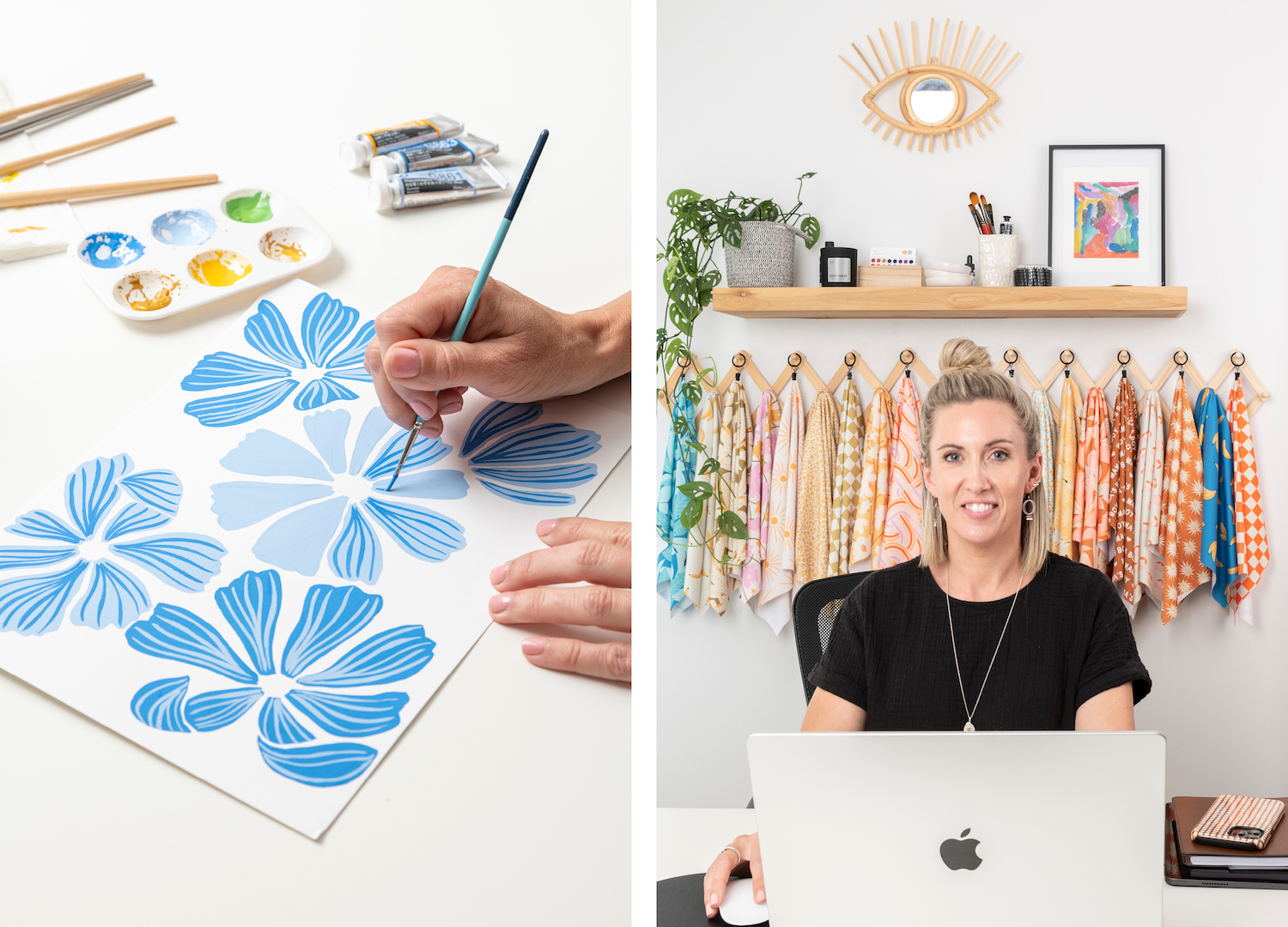
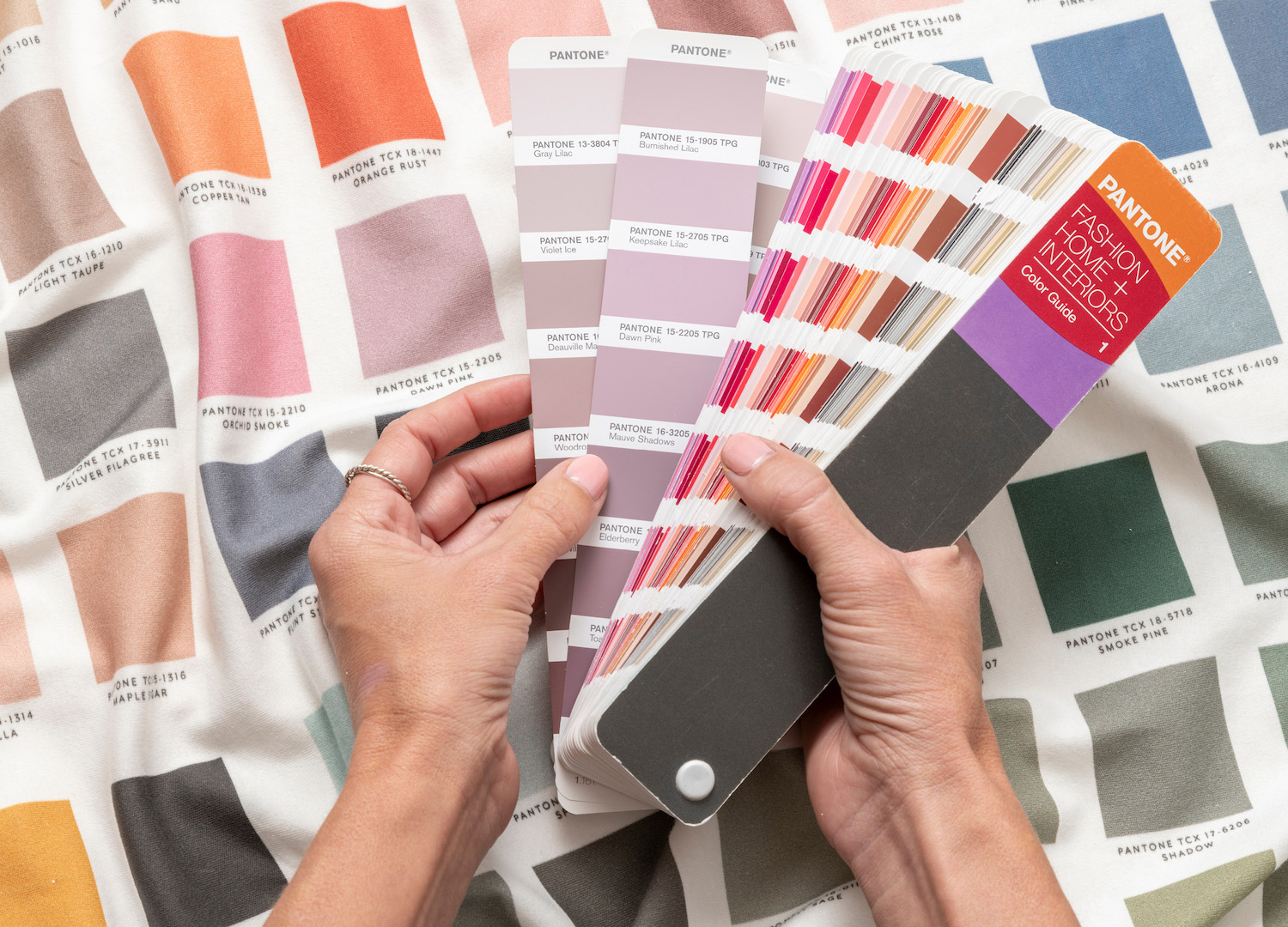
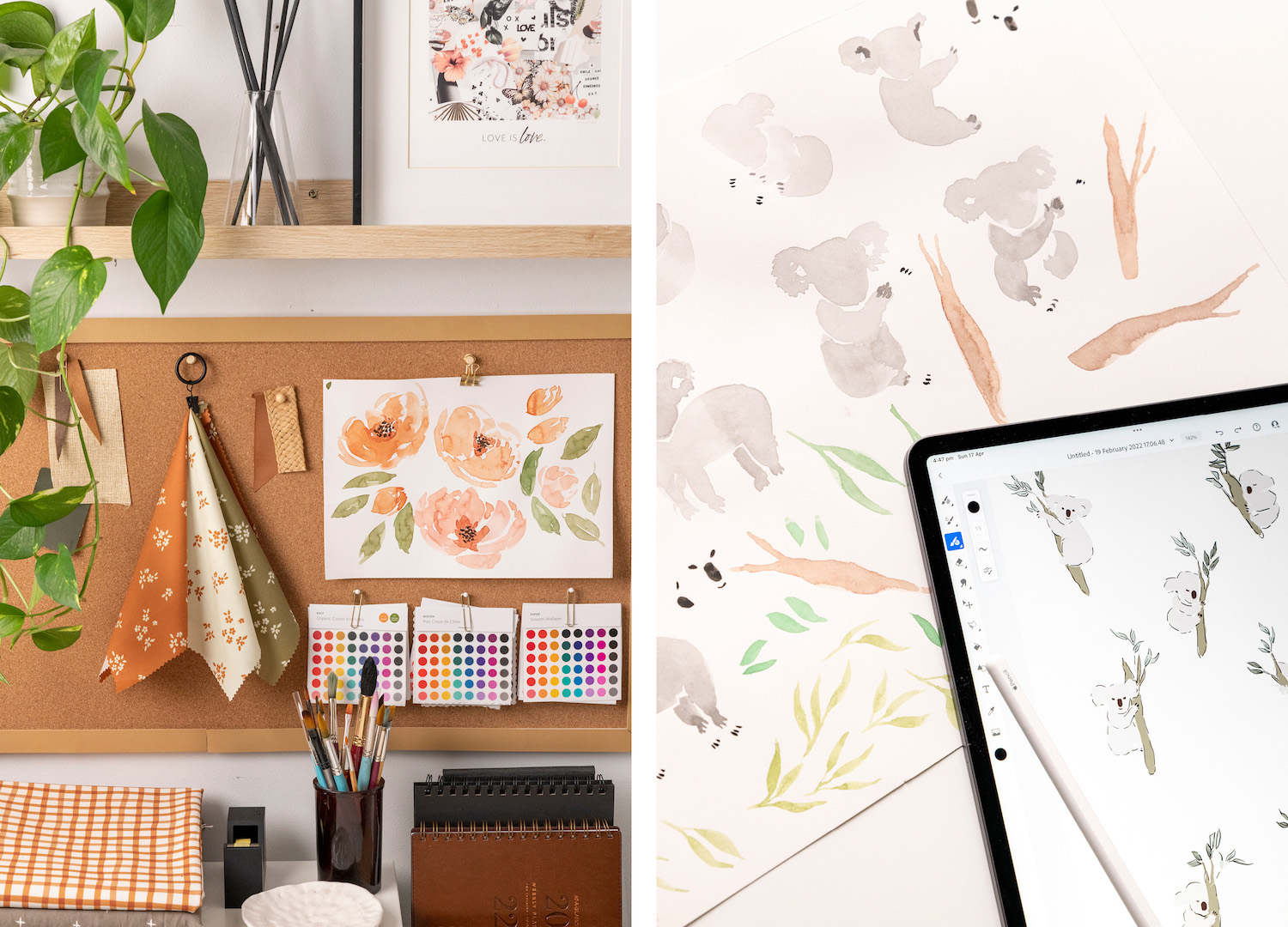
Can you explain your creative process?
I’m always in design mode! No matter where I am or what I’m doing, I’m always paying attention to my surroundings and looking at shapes, colours and textures. Any of these things can spark an idea. Once inspired, I’ll either get my paints out or draw on my iPad, and I always finish the process by creating the repeating pattern in Adobe Photoshop or Illustrator.
READ MORE – Inside Colour Queen Katie Kortman’s Technicolour World of Wearable Art
Do you consider yourself a designer or an artist first?
I’m an artist, first and foremost. This topic is discussed frequently in the surface design community because the work of artists and designers is often undervalued or not respected – as if anyone could do what we do. This is a perception that my peers and I are keen to change. Basically, if you create art then you’re an artist. There are no two ways about it.
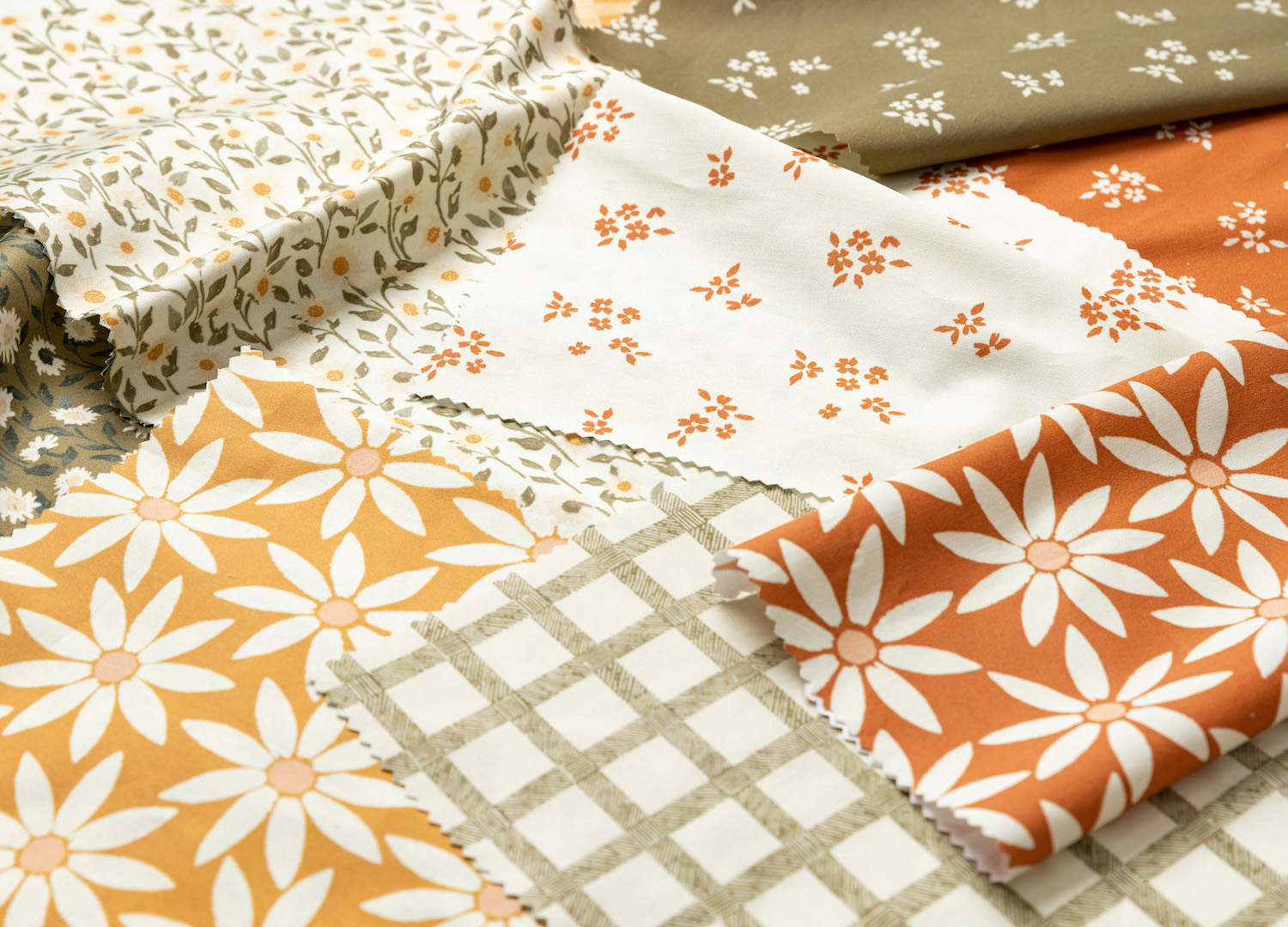
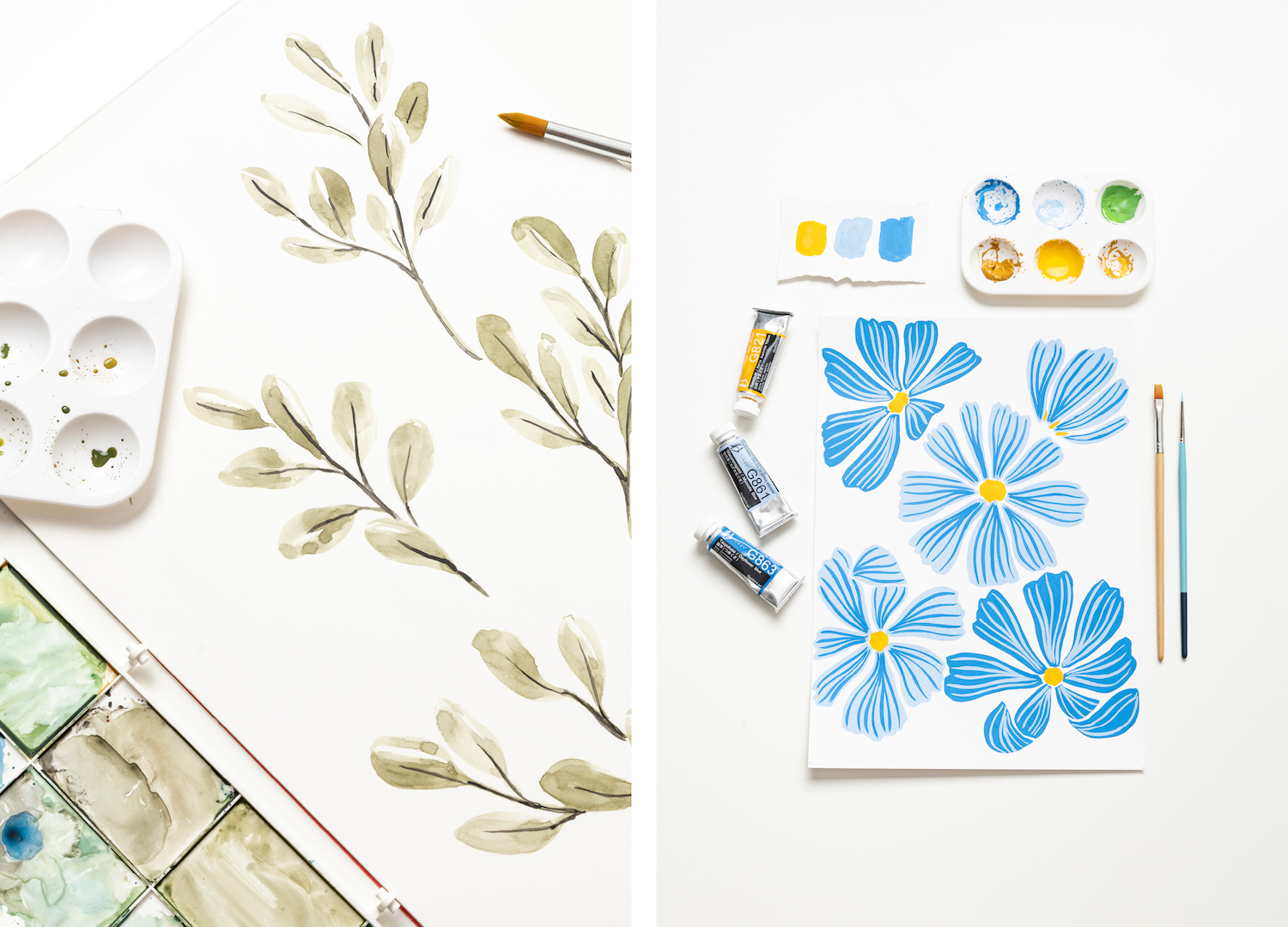
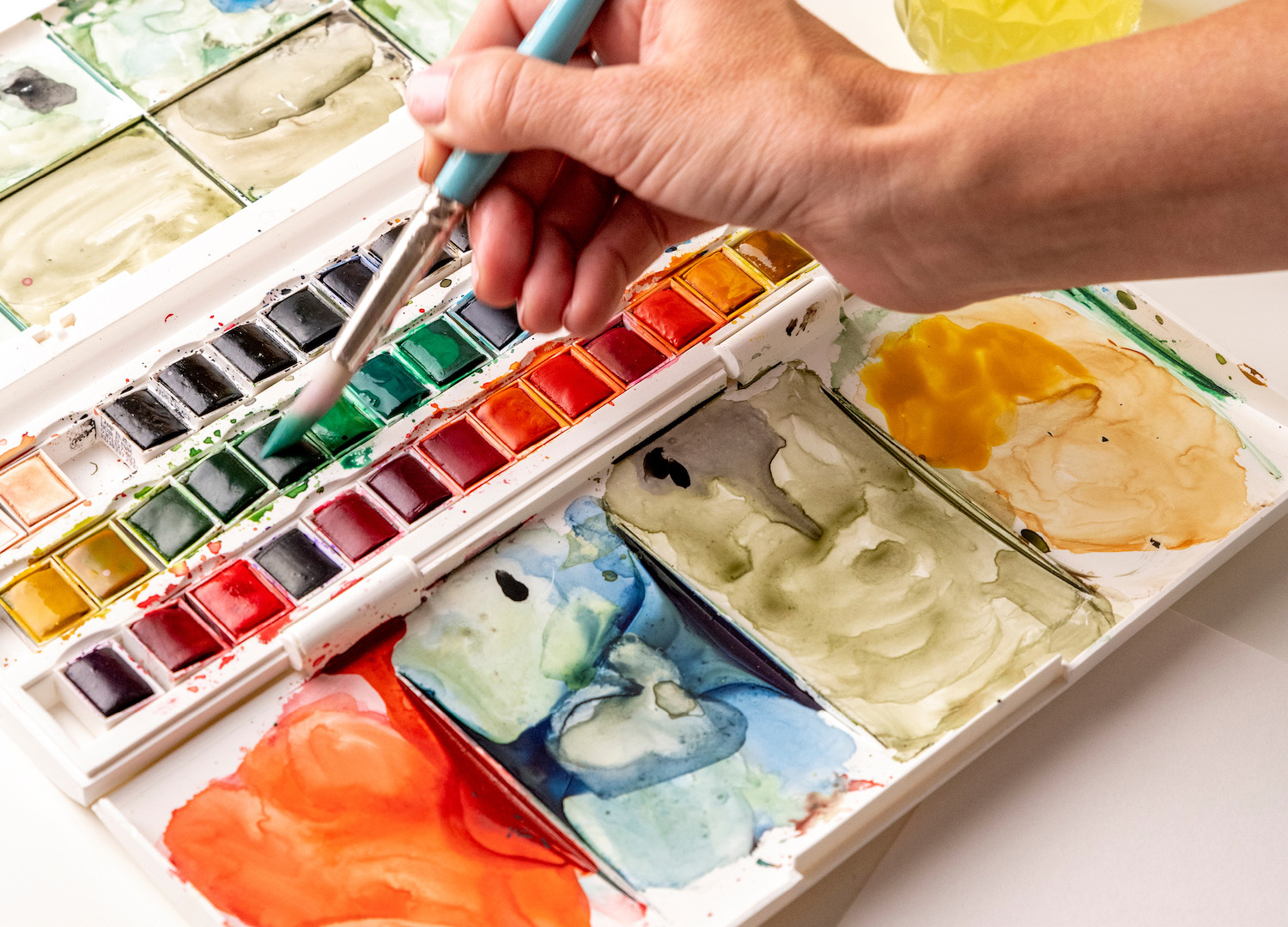
You work with a lot of indie and boutique labels. Why is that so important to you?
Instagram has really been the platform that’s helped me connect with brands and develop partnerships. Many of the labels I’ve collaborated with have cult-like followings with very loyal customers – and I just love that. Given my maker history, I especially love the grassroots collaboration with makers and the line of sight I get from designer to maker to end customer. I feel so special that I’m still involved in this process and that my designs are used to celebrate key life events, such as the birth of a new baby.
I feel so special that I’m still involved in this process and that my designs are used to celebrate key life events, such as the birth of a new baby.
Can you tell us a bit about your recent jump into teaching?
Last year I launched my first online course teaching designers how to dropship via Spoonflower, which is something I did while I was transitioning from my day job. I’ve discovered that a lot of people relate to the circumstances that preceded my creative career, which was, essentially, working a job I didn’t love and longing for a creative life. I field a lot of questions about how I’ve ‘done it,’ so I want to create more courses to share my knowledge and insight to help others realise their creative dreams – and how to avoid some of the pitfalls I experienced along the way.
What’s been your biggest learning curve?
Really, my whole surface design journey has been a huge learning curve. I had to learn everything from how to properly create a repeating pattern to art licensing – initially without a lot of guidance. My path might sound like it was easy, but it’s been a cultivation of hard work, determination, persistence, courage and vulnerability, coupled with strategic decision-making and business sense.
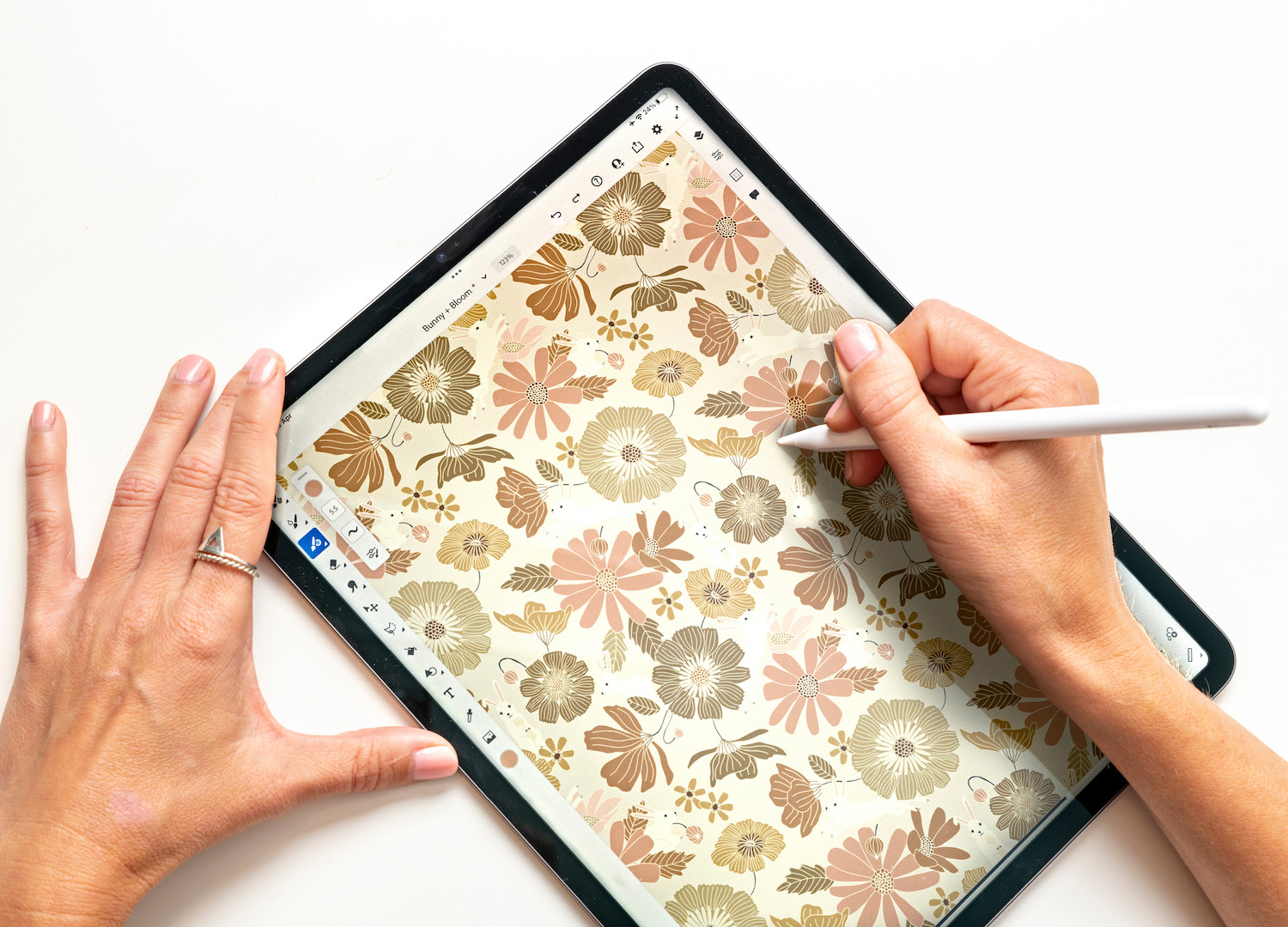
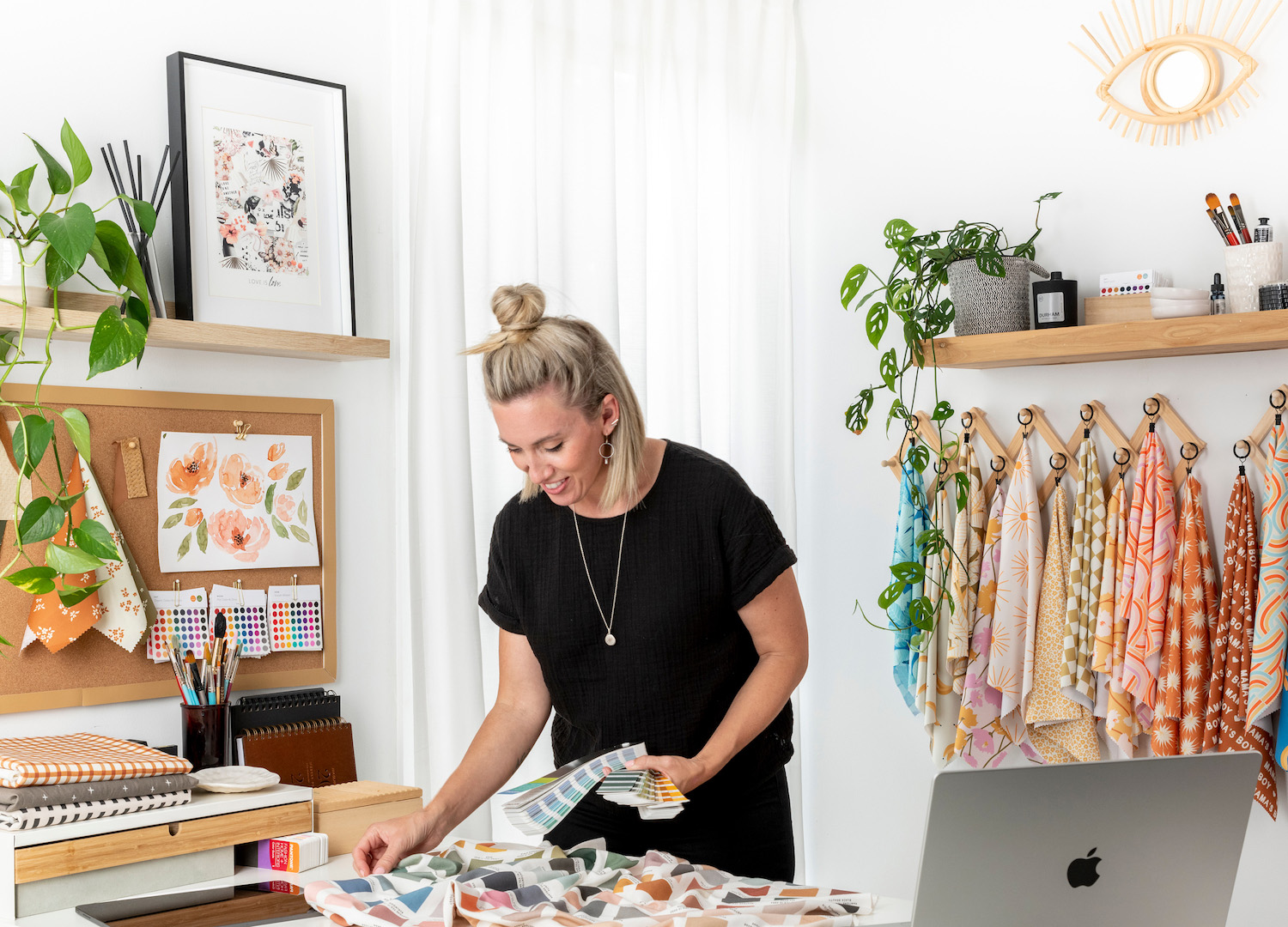
READ MORE – CLEVER COOKIE: WANT TO GET THE ALICE NIGHTINGALE LOOK?
THIS SERIES WAS CREATED IN COLLABORATION WITH OUR FRIENDS AT SPOONFLOWER. POP OVER TO SPOONFLOWER.COM FOR MORE FABRIC FUN.
JOIN OUR MAILING LIST
Brighten up your inbox with our not-too-frequent emails featuring Peppermint-related news, events, competitions and more!
explore
More articles
Look, I don’t want to make anyone panic but IT’S DECEMBER!!! If you’re planning to give homemade gifts, you’re going to have to act fast. I’m a big believer that a DIY gift is the best gift of all, because…
Listen, we need to talk about December. Somewhere between the first appearance of gazillions of Mariah Carey memes prepping us for the imminent arrival of…
When you hang a painting on a wall, the story stays put. But when you wear a beautifully made garment that may as well be…
We all do it: fire up the car for a 5-minute drive to pick up groceries, drop off sewing supplies, or run a quick errand…
Hang out with us on Instagram
Sunday serving suggestion ☀️
Gorgeous photos from @JolieFemmeStore - who make sweet garments from vintage bedsheets.
#PeppermintMagazine #SlowSunday #SwitchOff #Unplug #ReadAMagazine

A toast to the old you 🥂
We wholeheartedly love this post from the brilliant @EmilyOnLife:
“2026: Reinvent, burn it down, let it go (whatever it is). Year of the Snake it up. Exercise your boundaries, exercise your body, take one teeny step every day towards a life that feels better to be in.
But don’t you dare shit on your old self while you do it.
Hold yourself with reverence and tenderness and respect, because you got you this far. You did your very best with the information and tools you had at the time. You scraped yourself together, you made it work, you survived what felt impossible to survive: again and again and again.
You are perpetually in the process of becoming, whether you can feel it or not, whether or not you add it to your 2026 to-do list.“

Some very wise words from @Damon.Gameau to take us into 2026 🙌🏼

⭐️ We made it!!! ⭐️
Happy New Year, friends. To those who smashed their goals and achieved their dreams, and to those who are crawling over the finish line hoping to never speak of this year again (and everyone else in between): we made it. However you got here is enough. Be proud.
It’s been a tough year for many of us in small business, so here’s to a better year in 2026. We’re forever grateful for all your support and are jumping for joy to still be here bringing you creativity, kindness and community.
We’re also excited to be leaping into the NY with our special release sewing pattern – the Waratah Wrap Dress!
How great are our fabulous models: @Melt.Stitches, @KatieMakesADress and @Tricky.Pockets - and also our incredible Sewing Manager @Laura_The_Maker! 🙌🏼
Ok 2026: let’s do this. 💪🏼
#PeppermintWaratahWrapDress #PeppermintPatterns #SewingPattern #MeMade #WrapDress #WrapDressPattern

Putting together our annual Stitch Up brings on all the feels! We feel humbled that you’ve chosen to sew Peppermint patterns, we feel inspired by the versions you’ve created and we feel proud of you.
Where to begin?! As always, there has been a plethora of Peppermint patterns flooding our feeds this year, and we wish we could showcase more than just a handful of magnificent makes from you, our clever community. We encourage you to flip through the me-made items in your wardrobe or scroll through your grid and remind yourself of the beauty you’ve created with your own two hands (and maybe a seam ripper and some choice words). Congratulations to all of us for our creative achievements this year!
We’ve put together some (but absolutely not all) of our favourites from 2025 over on our website. We hope it inspires your next make!
🪡 Link in bio 🪡
Pictured: @FrocksAndFrouFrou @MazzlesMakes @KatieMakesADress @_Marueli_ @IUsedToBeACurtain @Nanalevine.Couture @PiperInFullColour @MadeByMeJessieB @SarahMalkawi @Made.By.Little.Mama
#PeppermintPatterns #SewingPatterns #MeMade #MeMadeEveryday

“The ocean is a great equaliser. It doesn’t matter your age, size, background or circumstances – when you’re in the water, you’re stripped back to your essence. I’ve watched women who were terrified of the ocean walk in tentatively, then emerge with tears of joy and new-found confidence.”
For Perth photographer Amanda Battle, the deep blue has brought sisterhood and second chances. Growing up in Shoalwater Marine Park, the ocean was both her playground and sanctuary, and a balm for body and soul during challenging times. Born from her own healing journey, Amanda’s @WomenOfWaterProject, book and documentary showcases a community of women who found belonging and connection in shared experiences in the ocean.
“Every single woman arrived with her own story – grief, trauma, joy, resilience – and every single woman showed up exactly as they were in that moment. Photographing over 100 women in the ocean for the Women of Water book has been the most humbling privilege of my life.”
Discover Amanda’s work and story in ‘Saltwater salve’ in issue 64, at newsagents and stockists now!
#PeppermintMagazine #WomenOfWater #OceanTherapy #DeepBlue #OceanPhotography

